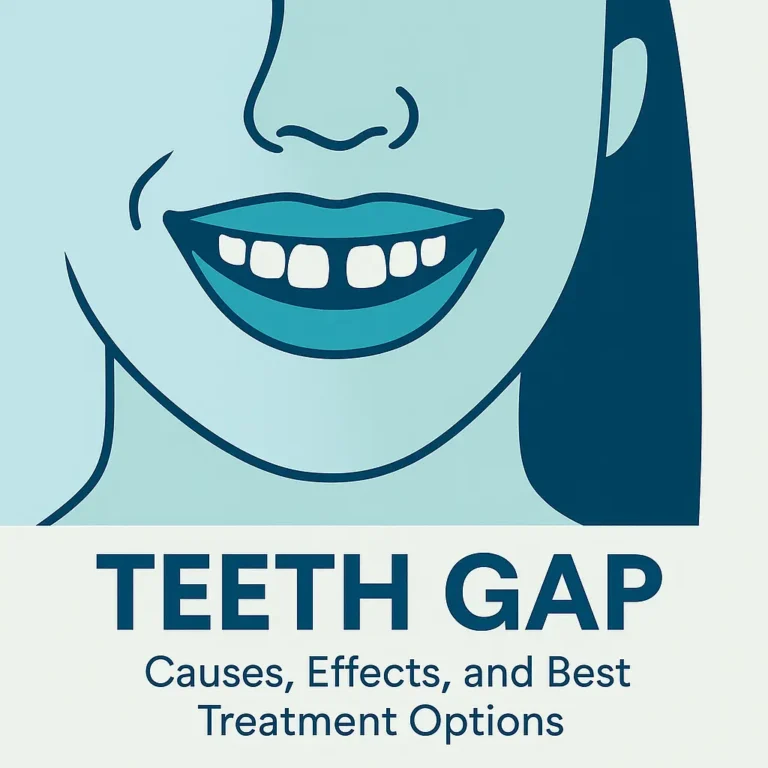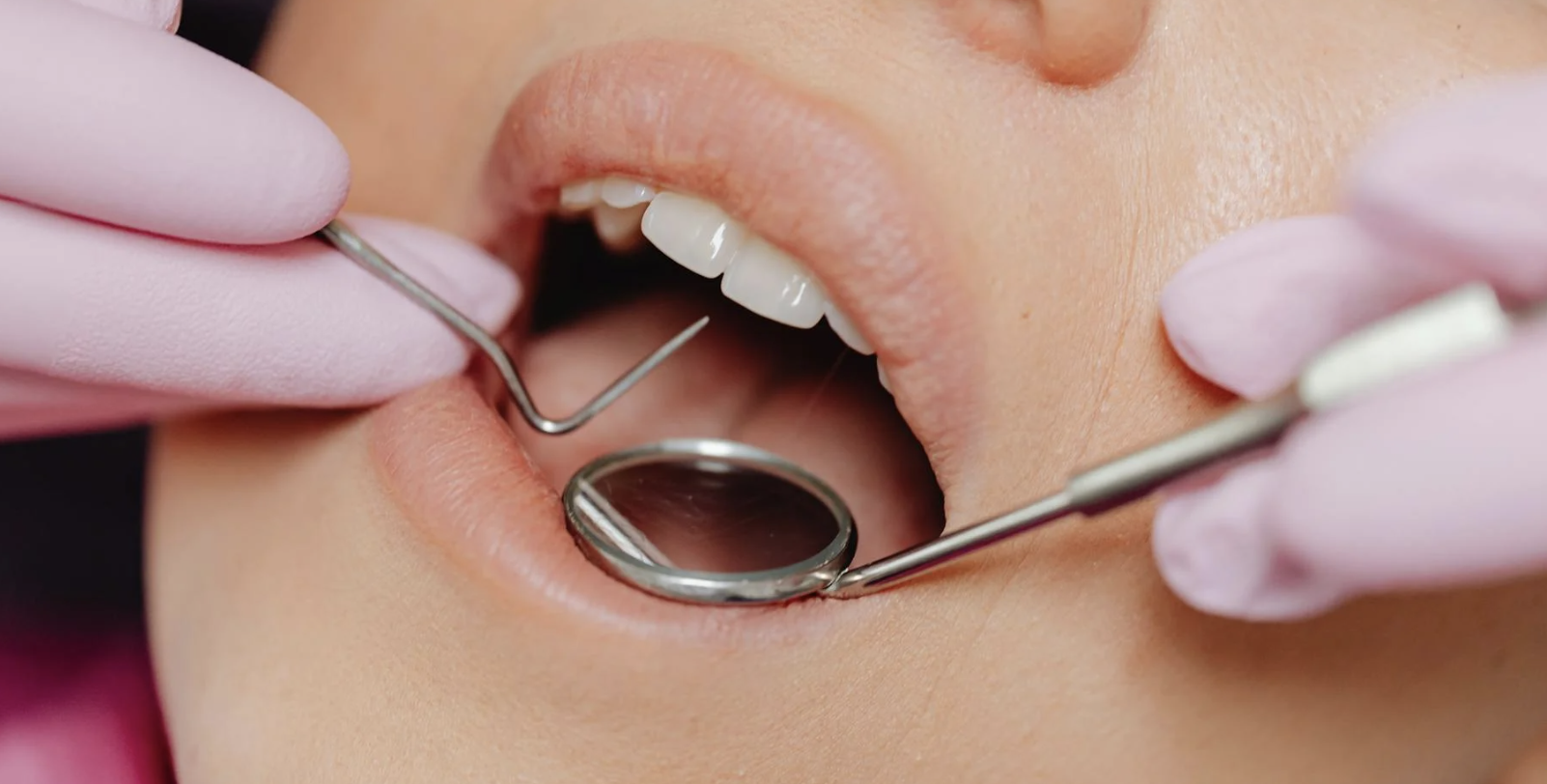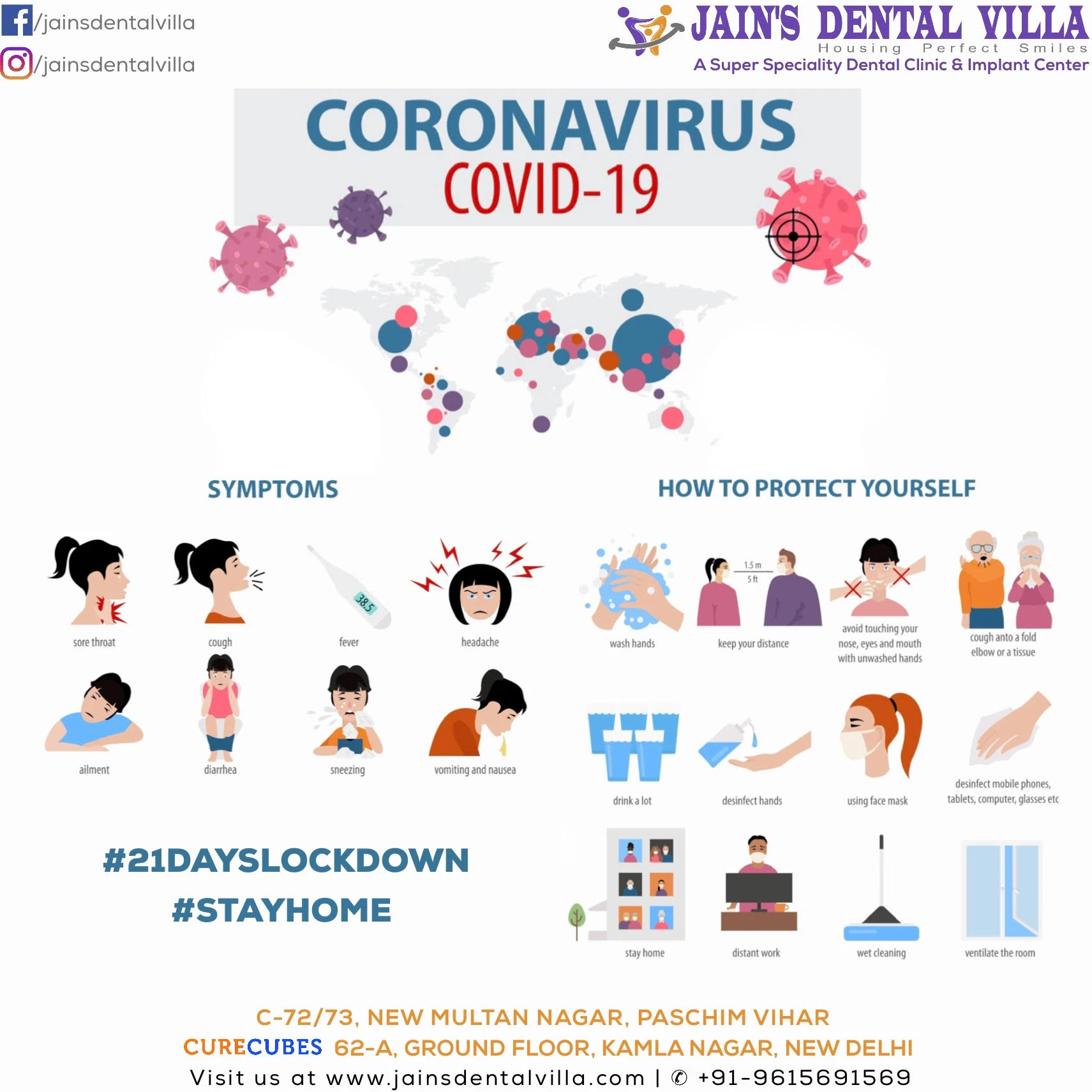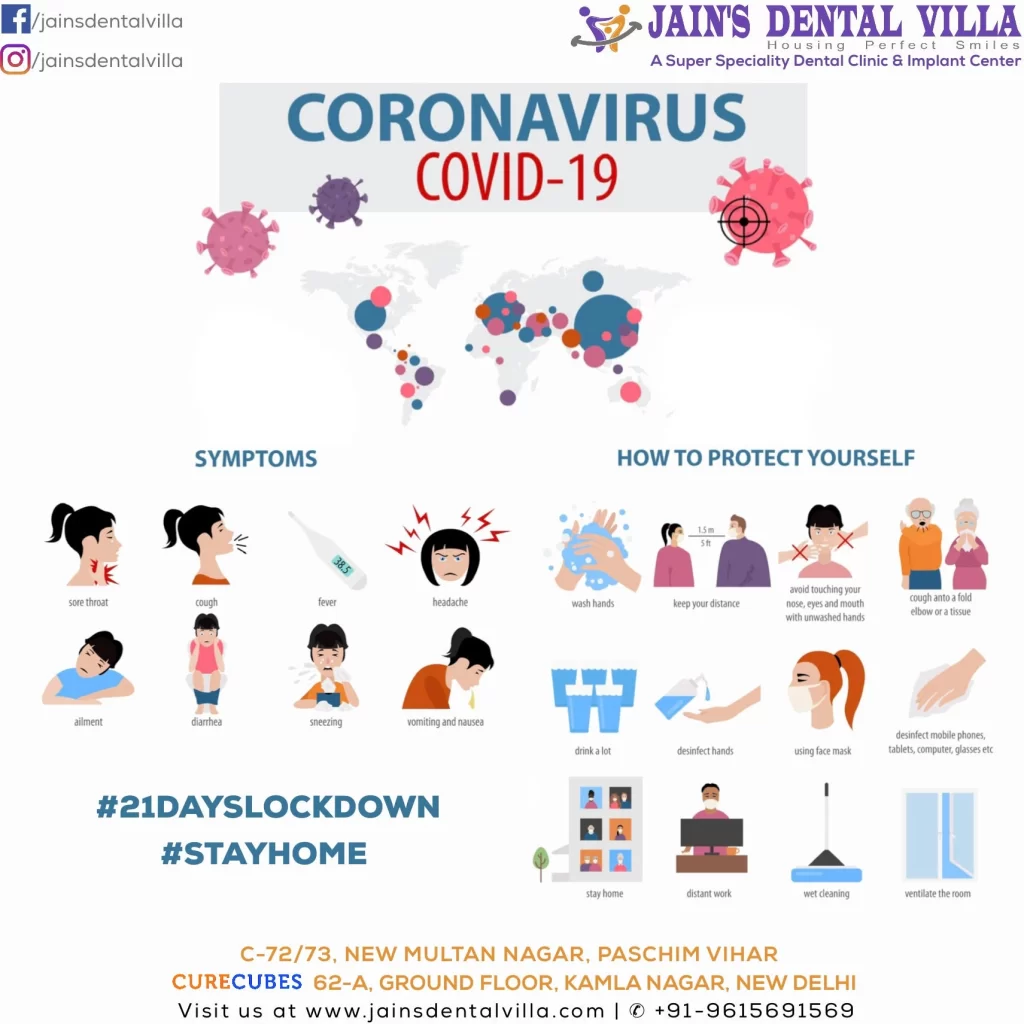Teeth Gap Troubles? Discover the Easiest Ways to Close or Embrace It!

You might grow up with gaps between your teeth as a child. While your baby teeth stay the same size, your jaw becomes larger. When your baby teeth start to fall out and larger permanent teeth erupt to cover the gaps, these gaps shift. Diastema are gaps in adult teeth.
What is a teeth gap ?
A diastema, commonly known as a gap tooth or tooth gap, is a space larger than 0.5 millimeters that separates two or more teeth. Although they can happen between any two teeth, diastemas most frequently occur between the two top front teeth. Diastemas are common and can be caused by an imbalance between the size of the jaw bone and the teeth. Diastema can also be brought on by genetics, tooth loss, aberrant frenum attachment, and thumb-sucking behaviors.
Some people decide to keep their diastemas because they think they look good. But they can also lead to problems with self-confidence, speech, and chewing. Veneers, orthodontic therapy, dental bonding, and in more extreme situations, dental implants or bridges, are available as treatments for diastemas. The patient’s preferences as well as the origin and severity of the diastema will determine the appropriate course of action.
Causes of Teeth Gap
1.Trauma due to Occlusion: When the upper and lower jaws come together, the teeth connect in a process known as occlusion. The best aesthetics, optimal oral function, and prevention of oral diseases are all facilitated by normal occlusion. Malocclusion, which can result in tooth damage, is the absence of proper occlusion.
2.There are two types of occlusal trauma: Primary and secondary. Extreme dental weakening, sensitivity, exposed dentin, and tooth movement are all signs of occlusal trauma. The formation of spaces between teeth as well as tooth drift and tipping are examples of secondary occlusal trauma.
3.Size of teeth relative to jawbone: If the teeth are too small in comparison to the size of the jawbone, gaps may form between the teeth. This can be genetic.
4.Missing or Undersized Teeth: This is among the most frequent causes of diastema. Gaps or spaces between teeth are caused by undersized or missing teeth. The upper lateral incisors, a pair of upper (maxillary) teeth, are primarily involved in this. The two front teeth become apart if the upper lateral incisors are tiny or absent.
5.Oversized Labial Frenum: Between the upper lip and the upper gum and between the lower lip and the lower gum, this kind of frenum is found in the front of the mouth. The growth of teeth may be altered, a gap may develop between teeth, and dental health may be impacted if this tissue pulls the gums away from a tooth, exposing the root.
6.Gum Disease or Periodontitis: Gums retreat and the jaw bone loses density and support as gum disease worsens. The teeth can readily shift, leaving spaces between them, in the absence of this stable foundation and feeble roots.
Periodontitis, an advanced stage of gum disease, causes inflammation that leads to the loss of the gum connection and bone support surrounding teeth. An irregular gap or space between the gums and the teeth may result from this.
Simply tapping the back of your teeth with your tongue might cause gaps and push your teeth forward if you have gum disease because periodontitis weakens the tissues that support your teeth.
Poor Dental Habits: Teeth spacing can result from practices like thumb sucking, lip sucking, tongue pushing, and others. You may develop a gap between your front teeth if you have a habit of pressing your tongue on your teeth as you swallow! As their teeth erupt, babies who frequently chew on their thumb are also more likely to experience gaps.
Loss of Primary Teeth: Children are most likely to exhibit this. When their primary teeth fall out, they experience a brief period of diastema. The gaps are filled in when the permanent teeth erupt. These gaps usually close as their adult, or permanent, teeth erupt.
Overhanging Dental Restorations: Gingival inflammation and diastema are frequently brought on by defective dental restorations and prostheses. One of the biggest issues with dental health is overhanging dental restorations, or ODR. An ODR is a restorative material extension that extends beyond cavity preparation. They have been firmly linked to the development of periodontal disease, which ultimately results in tooth spacing issues and other dental health issues. ODR removal can improve efficacy, but you should speak with your dentist.
Additionally, overhanging allows plaque to accumulate, which may alter the gingival sulcus region’s ecological balance and promote the growth of organisms linked to disease.
HOW TO CLOSE TEETH GAP WITHOUT BRACES?
1.Dental Bonding: If you have gaps in your front teeth, you might be a good candidate for dental bonding. Your smile will look better after this minimally invasive surgery to close your tooth gap. You won’t detect the composite because it blends in with your natural teeth.
When bonding teeth, dentists employ composite resin to fix anatomical defects such as spaces between teeth. The procedure just requires one dental appointment and takes thirty minutes to an hour to finish. Following the operation, patients are able to resume their regular dental activities.
2.Veneers: One of the mainstays of modern cosmetic dentistry is veneers. In order to conceal imperfections that become visible when a person smiles, these oral restorations are extremely thin shells that are glued onto the front surfaces of teeth. Since veneers can be applied in as little as two weeks, they are the quickest method of improving a person’s tooth’s appearance.
3.Crowns and Bridges: Porcelain dental crowns can be sized to match the gap’s spacing when they are placed over the tooth or teeth on either side of the gap. As a result, there doesn’t seem to be any gapping between the teeth. This type of diastema alteration is a quick and affordable option to close a tooth gap, restore a person’s smile, and enhance their general quality of life.
Dental bridges fill up the spaces left by one or more missing teeth. Dental bridges can restore the appearance and function of missing teeth, including front teeth. A pontic, or artificial tooth, can be used to support dental bridges, which are composed of dental crowns positioned on each side of the missing tooth. The anchoring teeth, known as an abutment, are the teeth on either side of the dental gap. Gold, silver amalgam, or porcelain can be used to create the pontic, or fake teeth, as directed by the dentist. Dental bridges can also be supported by natural teeth or implants.
4.Frenectomy: The size of the frenum can be reduced with the help of a procedure called frenectomy. By doing this, the tension holding your teeth apart is reduced, making it possible to use braces to realign your teeth. After numbing your gums and extracting a small amount of frenum, you are on your way. The fact that lasers are now frequently utilized for this surgery makes the process much simpler. The cost of bringing your front teeth together is minimal, but you will experience some stiffness for a few days while your tissue recovers.
Closing Gaps in Teeth at Home
1.Oil Pulling
2.Tongue Exercises
3.Flossing
4.Use of Dental Bands or Floss Ties
5.Use of Teeth Gap Bands
6.Smile Exercises
7.Diet and Nutrition
Advantages of Teeth Gap Treatment
For aesthetic reasons, people frequently decide to close the gap between their teeth. By doing this, you can improve your smile’s symmetry and uniformity, which will increase your self-esteem and confidence.
Food particles can occasionally get trapped in dental gaps, raising the risk of plaque accumulation and dental problems like cavities and gum disease. Maintaining good dental hygiene can be made simpler and more efficient by closing the gap.
A large space between teeth may occasionally be a factor in speech problems or trouble pronouncing words correctly. These problems might be lessened and voice clarity could be enhanced by closing the gap.
Over time, dental gaps may cause nearby teeth to move out of alignment. Maintaining appropriate tooth alignment and preventing this undesired movement can be achieved by closing the gap between teeth.
Disadvantages of Teeth Gap Treatment
1.Braces, aligners, and dental bonding are examples of costly dental procedures used to narrow gaps. Your choice may be influenced by cost, particularly if your insurance does not cover the treatment.
2.When it comes to wearing braces or other orthodontic procedures, closing a dental gap usually takes time. You’ll need to think about if you’re prepared to put in the time required to get the outcomes you want.
Closing the gaps between teeth is the goal of the cosmetic dentistry technique known as tooth gap filling. Depending on the patient's preferences and the size of the gap, this can be accomplished using a variety of techniques, including orthodontics, veneers, crowns, and dental bonding.
A number of causes, such as genetics, variations in tooth size, tooth loss, or habits like thumb sucking, can cause gaps, often referred to as diastemas. Knowing what caused your gap might help you choose the best course of action. For example, a straightforward operation known as a frenectomy may close a gap that is brought on by a big labial frenum.
The length of time varies depending on the technique used: veneers take several appointments, orthodontics might take months or even years to finish, and dental bonding can be finished in a single visit. Transparent aligners can occasionally produce the desired results in six months to two years, while traditional braces typically take 18 months to three years.









